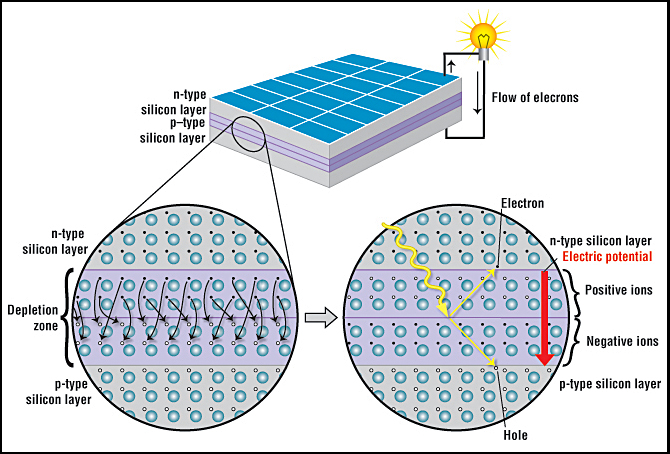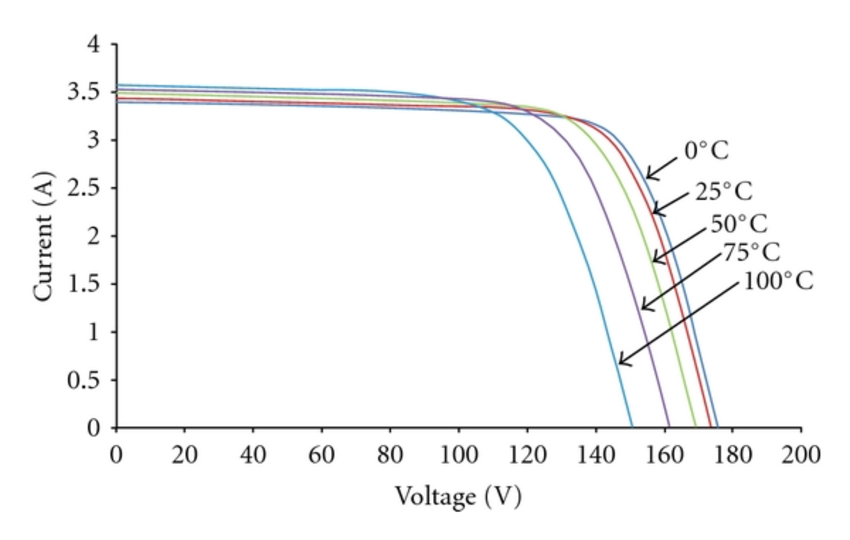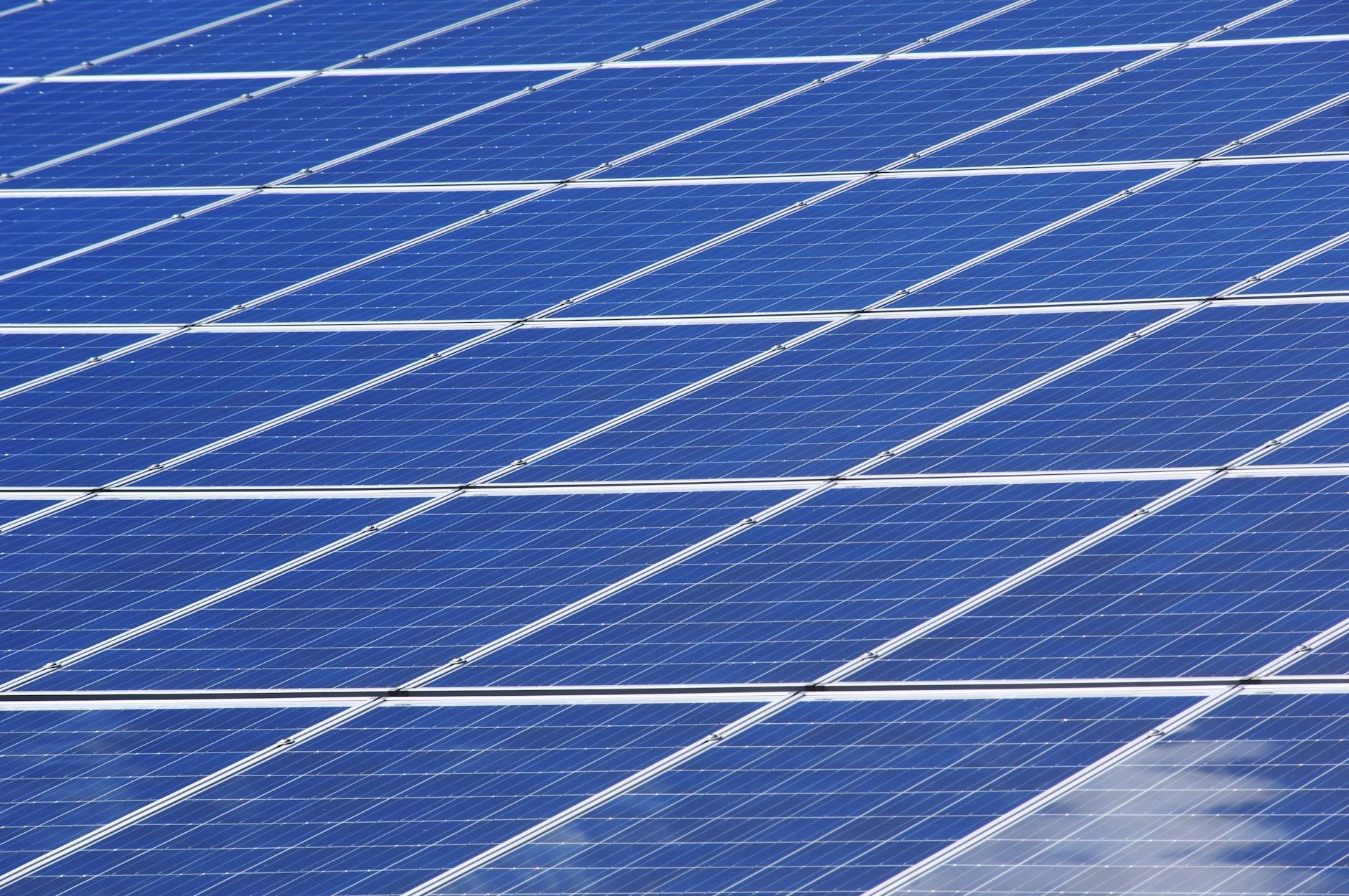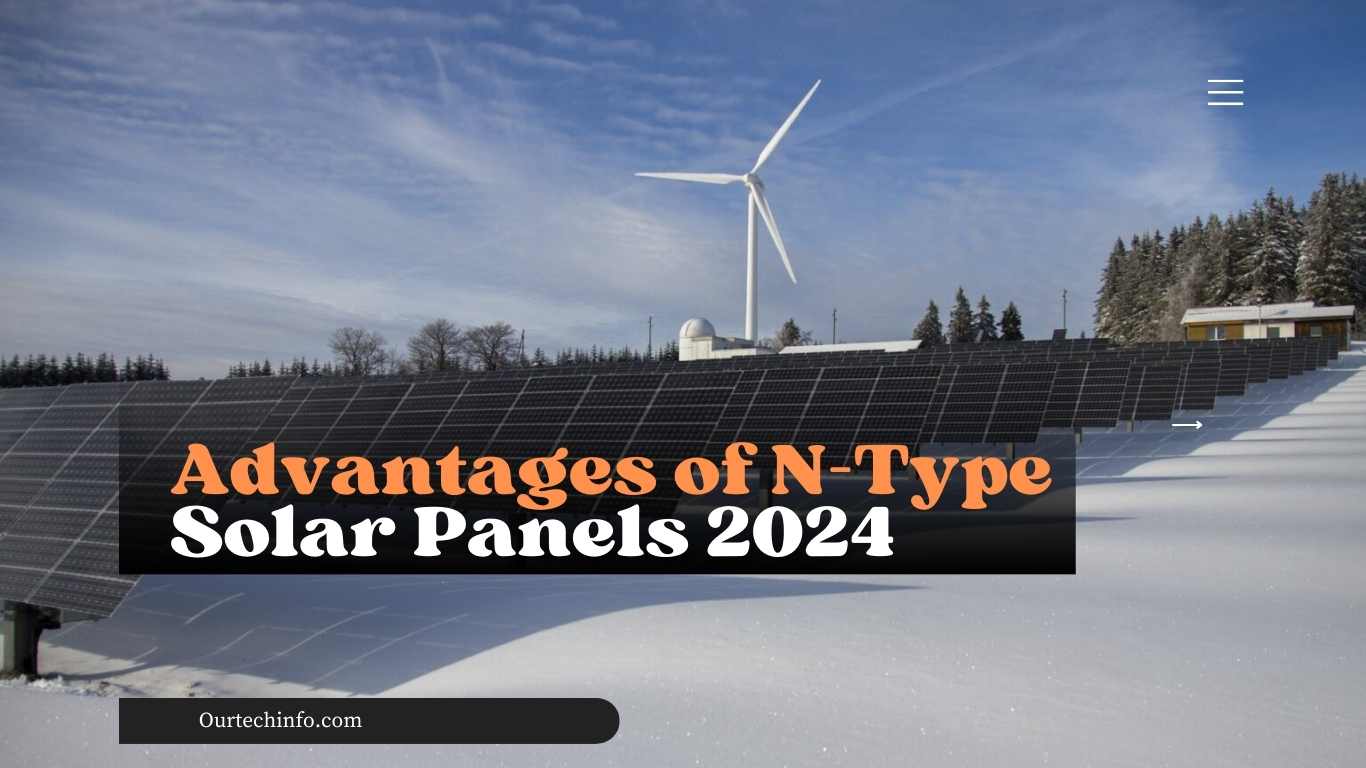Table of Contents
As the world becomes increasingly conscious of the importance of sustainable energy sources, solar power continues to gain traction as a viable and renewable option. N-type solar panels are at the forefront of the solar energy revolution, offering distinct advantages over traditional P-type panels. In this article, we will delve into the future of solar energy by exploring the numerous benefits of N-type solar panels.
| Advantages of N-Type Solar Panels | Description |
|---|---|
| Higher Efficiency | N-Type solar panels typically exhibit higher efficiency due to lower recombination losses. |
| Better Performance in High Temperatures | N-Type solar cells are less susceptible to performance degradation at high temperatures compared to P-Type cells. |
| Lower Degradation Rate | N-Type solar panels tend to degrade at a slower rate over time compared to P-Type panels. |
| Reduced Light Induced Degradation (LID) | N-Type cells experience less light-induced degradation, leading to better long-term performance. |
| Improved Low-Light Performance | N-Type cells have better low-light performance, allowing them to generate electricity even in low-light conditions. |
| Reduced Sensitivity to Impurities | N-Type cells are less sensitive to impurities, which can improve overall cell performance and longevity. |
| Longer Lifespan | N-Type solar panels generally have a longer lifespan due to their reduced degradation rates and improved durability. |
| Greater Durability | N-Type cells tend to be more durable, making them less prone to physical damage and environmental stresses. |
| Lower Risk of Potential Induced Degradation (PID) | N-Type panels have a lower risk of potential induced degradation, ensuring more stable long-term performance. |
| More Suitable for Bifacial Configurations | N-Type cells are well-suited for bifacial solar panel designs, allowing for increased energy production by capturing sunlight from both sides. |
| Enhanced Performance in Shaded Conditions | N-Type cells perform better in shaded conditions compared to P-Type cells, maintaining higher output levels. |
N-type solar panels are highly efficient, converting sunlight into electricity at higher rates than their P-type counterparts. With enhanced light absorption capabilities and reduced energy loss, these panels offer a significant boost in performance. Additionally, their excellent temperature coefficient ensures optimal energy production even in extreme weather conditions.
This technology also boasts superior durability and extended lifespan due to its unique construction materials. With reduced degradation over time, N-type solar panels deliver consistent energy output for decades, making them a wise long-term investment.
Furthermore, N-type solar panels exhibit greater resistance to heat-induced degradation, ensuring their efficiency in hot climates. This advantage makes them well-suited for a wide range of geographical locations, expanding the potential for renewable energy generation.
In conclusion, the future of solar energy lies in the adoption of N-type solar panels. Their outstanding efficiency, durability, and adaptability make them an attractive choice for both residential and commercial applications.
Understanding the different types of solar panels
Solar energy has emerged as a crucial player in the quest for sustainable and renewable energy sources. The advancement of solar panel technology has led to the development of various types of solar panels, each with its own unique characteristics and advantages. Among these, N-type solar panels have gained significant attention for their superior performance and efficiency

N-type solar panels, also known as N-type crystalline silicon solar panels, differ from the more commonly used P-type panels in their composition and structure. While P-type panels have a positive charge, N-type panels have a negative charge. This distinction may seem minor, but it has a significant impact on the panel’s overall efficiency and performance
| Type of Solar Panel | Description |
|---|---|
| Monocrystalline | Made from single-crystal silicon, they are highly efficient and space-efficient, often with a black hue. |
| Polycrystalline | Made from multiple silicon crystals, they are less efficient but more affordable than monocrystalline panels. |
| Thin-Film (Amorphous) | Made from non-crystalline silicon or other photovoltaic materials, they are lightweight and flexible, suitable for various applications. |
| Cadmium Telluride (CdTe) | These panels use a thin layer of cadmium telluride as the semiconductor material, offering relatively low production costs. |
| Copper Indium Gallium Selenide (CIGS) | Similar to CdTe panels, CIGS panels use a thin layer of semiconductor material, offering flexibility and efficiency. |
| Bifacial Panels | These panels can absorb sunlight from both sides, increasing efficiency by capturing reflected sunlight from the ground. |
N-type solar panels are made using high-purity silicon, which is doped with additional elements such as phosphorus or arsenic. This doping process creates an excess of electrons in the silicon, resulting in a negative charge. The presence of these additional electrons enhances the panel’s ability to absorb sunlight and convert it into electricity.
Solar Panels Selection Based On Temperature
| Temperature Range (°C) | Panel Efficiency | Temperature Coefficient | Panel Type |
|---|---|---|---|
| 0-10 | High | Low | Monocrystalline |
| 10-20 | High | Low | Monocrystalline |
| 20-30 | High | Moderate | Monocrystalline or Polycrystalline |
| 30-40 | Moderate to High | Moderate to High | Polycrystalline or Thin-Film |
| 40-50 | Moderate | High | Thin-Film |
Advantages of N-type solar panels
1. Enhanced efficiency and performance
N-type solar panels are renowned for their exceptional efficiency and performance. Compared to P-type panels, N-type panels have a higher light absorption capacity, allowing them to generate more electricity from the same amount of sunlight. This increased efficiency is particularly beneficial in areas with less intense sunlight or during cloudy weather conditions.
In addition to their enhanced light absorption capabilities, N-type panels also exhibit a lower temperature coefficient. This means that even in extreme weather conditions, such as high heat or cold temperatures, N-type panels can maintain their efficiency and continue to produce electricity at optimal levels. This advantage makes them a reliable choice for regions with varying climates.
2. Extended lifespan and durability
Durability is a crucial factor when considering the longevity and return on investment of solar panels. N-type solar panels excel in this aspect due to their unique construction materials. The high-purity silicon used in N-type panels ensures a higher resistance to degradation over time, resulting in a longer lifespan and consistent energy output

Furthermore, N-type panels are less susceptible to the effects of heat-induced degradation compared to P-type panels. This makes them particularly well-suited for areas with high temperatures, such as deserts or tropical regions. The ability to withstand extreme heat without significant efficiency loss significantly expands the potential for renewable energy generation in various geographical locations.
3. Adaptability and versatility
N-type solar panels offer greater adaptability and versatility compared to other types of solar panels. Due to their higher efficiency and lower temperature coefficient, N-type panels can be used in a wide range of applications and industries. From residential rooftops to large-scale solar farms, N-type panels can cater to varying energy requirements.
The adaptability of N-type panels also makes them an attractive option for off-grid applications, such as remote cabins or mobile homes. Their ability to generate electricity efficiently under different weather conditions and in various locations opens up opportunities for decentralized and independent energy generation.
Efficiency and performance of N-type solar panels
The key factor that sets N-type solar panels apart from other types is their superior efficiency and performance. N-type panels have a higher light absorption capacity, allowing them to generate more electricity from the same amount of sunlight. This increased efficiency is primarily due to the presence of additional electrons in the silicon, which enables better electron flow and enhances the conversion of sunlight into electricity.
In addition to their enhanced light absorption capabilities, N-type panels have a lower temperature coefficient compared to P-type panels. The temperature coefficient of a solar panel refers to the change in its efficiency as the temperature rises. N-type panels exhibit a smaller decrease in efficiency with rising temperatures, ensuring optimal energy production even in hot climates

Furthermore, N-type panels have lower energy losses, resulting in higher overall performance. The reduced energy losses are attributed to the absence of impurities and defects in the silicon, which allows for better electron flow and less resistance within the panel.
Cost considerations of N-type solar panels
While the advantages of N-type solar panels are compelling, it is essential to consider the cost implications of adopting this technology. Historically, N-type panels have been more expensive to manufacture compared to P-type panels. However, advancements in manufacturing processes and economies of scale have led to a gradual reduction in the cost of N-type panels.
The higher efficiency and performance of N-type panels can offset their initial higher cost. With increased electricity generation and improved durability, the long-term cost savings and return on investment of N-type panels can outweigh the initial investment. Additionally, as the demand for N-type panels continues to rise, the economies of scale will likely further drive down their cost.
| Solar Panel Type | Efficiency (%) | Cost (per watt) | Durability | Temperature Coefficient |
|---|---|---|---|---|
| N-Type | High | Moderate | High | Low |
| P-Type | Moderate | Low | Moderate | Moderate |
| Bifacial | Moderate-High | Moderate-High | Moderate | Low |
| Thin Film | Low-Moderate | Low-Moderate | Low | High |
It is crucial to evaluate the specific energy requirements and financial considerations of each project when determining the cost-effectiveness of N-type solar panels. Consulting with solar energy experts and conducting a thorough analysis of the project’s energy needs and financial projections can help determine whether the benefits of N-type panels outweigh their initial cost.
Environmental benefits of N-type solar panels
The environmental benefits of solar energy as a whole are well-documented, and N-type solar panels contribute to these advantages in several ways
| Environmental Benefit | Description |
|---|---|
| Higher Efficiency | N-type solar panels typically have higher efficiency compared to other types, meaning they generate more power per unit area, reducing the need for additional panels and minimizing land use. |
| Longer Lifespan | N-type solar panels often have a longer lifespan compared to other types, reducing the frequency of replacements and associated environmental impacts. |
| Reduced Carbon Emissions | The higher efficiency and longer lifespan of N-type panels result in fewer carbon emissions over their lifetime compared to other types, contributing to mitigating climate change. |
| Lower Toxicity | N-type solar panels typically contain fewer toxic materials compared to some other types, reducing the environmental impact during manufacturing, usage, and disposal. |
| Better Performance in Heat | N-type panels often have lower temperature coefficients, meaning they perform better in high-temperature environments, maintaining efficiency and overall performance in hot climates. |
1. Reduced carbon emissions
By harnessing the power of the sun to generate electricity, N-type solar panels help reduce reliance on fossil fuels, which are major contributors to greenhouse gas emissions. The use of N-type panels in residential, commercial, and industrial applications can significantly lower carbon emissions and mitigate the impact of climate change.
2. Minimal environmental footprint
The production and installation of N-type solar panels have a relatively low environmental footprint compared to other energy sources. The primary raw material used in N-type panels, high-purity silicon, is abundant and widely available. The manufacturing process of N-type panels also involves fewer hazardous materials and chemicals compared to other solar panel technologies.
3. Resource conservation
N-type solar panels contribute to the conservation of natural resources, such as water and land. Unlike conventional energy sources like coal or natural gas, solar energy does not require extensive water consumption or land disturbance. By opting for N-type solar panels, individuals and organizations can actively participate in sustainable resource management and reduce their environmental impact.
The future of N-type solar panels in the solar industry
As the world moves towards a more sustainable future, the demand for renewable energy sources continues to increase. N-type solar panels are poised to play a significant role in the solar industry’s future due to their exceptional efficiency, durability, and adaptability.
1. Advancements in technology
Ongoing research and development efforts in the field of N-type solar panels are focused on further enhancing their efficiency and performance. Innovations such as tandem solar cells, which combine multiple layers of N-type and other advanced materials, hold the potential to achieve even higher conversion efficiencies. These advancements will contribute to the widespread adoption of N-type panels and further drive down their costs.
2. Integration with energy storage
The integration of N-type solar panels with energy storage solutions, such as batteries, is another area of potential growth. By coupling energy storage systems with N-type panels, individuals and organizations can ensure a consistent and reliable power supply, even during periods of low sunlight or at night. This integration can reduce dependence on the grid and provide greater energy independence.
3. Expansion into new applications
N-type solar panels have already found applications in various industries, ranging from residential and commercial installations to large-scale solar farms. The future holds even more potential for N-type panels to be integrated into unconventional applications. For example, the integration of N-type panels into building materials, such as windows or facades, can transform entire structures into self-sufficient energy generators.
Applications and industries that can benefit from N-type solar panels
The advantages offered by N-type solar panels make them suitable for a wide range of applications and industries. Here are some key sectors that can benefit from the adoption of N-type panels
| Application/Industry | Description |
|---|---|
| Residential Buildings | N-type solar panels are suitable for residential rooftops due to their high efficiency, allowing homeowners to generate more electricity and potentially save on energy bills. |
| Commercial Buildings | Commercial buildings can benefit from N-type panels on rooftops or integrated into building facades, providing clean energy and potentially reducing operational costs. |
| Industrial Facilities | Industries can use N-type panels to power their operations, reducing reliance on grid electricity, cutting costs, and improving sustainability performance. |
| Agricultural Sector | N-type solar panels can be installed on farmland without compromising agricultural activities significantly, providing additional income for farmers and helping meet sustainability goals. |
| Remote Areas/Off-grid | N-type solar panels are ideal for powering remote areas or off-grid locations where access to conventional power sources is limited, providing a reliable and sustainable energy solution. |
| Urban Infrastructure | N-type panels can be integrated into urban infrastructure such as bus stops, streetlights, and noise barriers, contributing to renewable energy generation while utilizing limited space efficiently. |
| Transportation Sector | N-type solar panels can be integrated into vehicles, charging stations, and infrastructure to power electric vehicles, reducing reliance on fossil fuels and promoting sustainable transportation. |
1. Residential sector
N-type solar panels are an excellent choice for residential rooftop installations. Their higher efficiency allows homeowners to generate more electricity from limited roof space, maximizing their energy production and savings. The durability and extended lifespan of N-type panels ensure a reliable and long-lasting energy solution for homeowners.
2. Commercial sector
Commercial buildings, including offices, retail spaces, and industrial facilities, can significantly benefit from the adoption of N-type solar panels. The higher energy generation capacity and efficiency of N-type panels can help businesses reduce their electricity bills and lower their carbon footprint. Additionally, the adaptability of N-type panels allows for integration into various architectural designs, making them suitable for both new constructions and retrofit projects.
3. Agricultural sector
The agricultural industry can leverage the advantages of N-type solar panels to power irrigation systems, farm equipment, and livestock facilities. Farmers can generate clean electricity on-site, reducing their dependence on traditional energy sources and lowering operational costs. The scalability of N-type panels makes them suitable for small-scale farms as well as large agricultural operations.
4. Industrial sector
Industries with high energy demands, such as manufacturing plants and factories, can benefit from the installation of N-type solar panels. The exceptional efficiency and durability of N-type panels can help industries reduce their energy costs and enhance their sustainability practices. By adopting N-type panels, industrial facilities can contribute to a greener and more sustainable future.
Challenges and limitations of N-type solar panels
While N-type solar panels offer numerous advantages, they are not without their challenges and limitations. It is essential to consider these factors when evaluating the suitability of N-type panels for a specific project.
1. Higher initial cost
As mentioned earlier, N-type solar panels have historically been more expensive to manufacture compared to P-type panels. Although their costs have been gradually decreasing, the initial investment for N-type panels can still be higher. However, when considering the long-term benefits, such as increased energy generation and extended lifespan, the cost difference can be justified.
2. Availability and manufacturing capacity
The manufacturing capacity for N-type solar panels is currently lower compared to P-type panels. This limited availability can result in longer lead times and potential supply chain constraints. However, as the demand for N-type panels continues to rise, manufacturers are expanding their production capacities to meet the market’s needs.
3. Compatibility with existing systems
Integrating N-type solar panels into existing solar systems or grids may require additional considerations. The electrical characteristics and requirements of N-type panels may differ from those of other solar panel technologies, necessitating system modifications or upgrades. It is crucial to consult with solar energy professionals to ensure compatibility and maximize the benefits of N-type panels.
Conclusion
The future of solar energy lies in the adoption of N-type solar panels. Their exceptional efficiency, durability, and adaptability make them an attractive choice for both residential and commercial applications. The advantages offered by N-type panels, such as enhanced performance, extended lifespan, and superior temperature coefficient, position them as a leading technology in the solar industry.
While N-type panels may have initial cost considerations and limitations, their long-term benefits and positive environmental impact outweigh these challenges. As technology continues to advance and manufacturing capacities increase, N-type solar panels will become more accessible and affordable.
By embracing the potential of N-type solar panels, individuals, businesses, and industries can contribute to a sustainable future powered by clean and renewable energy. The time to invest in solar energy is now, and N-type panels are leading the way towards a greener and more sustainable world.
FAQ
What are N-type solar panels, and how do they differ from other types?
N-type solar panels are a type of photovoltaic panel that utilizes silicon doped with phosphorus and arsenic. They differ from other types, like P-type, due to the polarity of the silicon material used. N-type panels typically have higher efficiency and lower temperature coefficients compared to P-type panels
What are the primary benefits of using N-type solar panels?
N-type solar panels offer higher efficiency, longer lifespan, lower temperature coefficients, and reduced degradation over time compared to other types. They also tend to perform better in hot climates and have lower toxic material content, contributing to environmental sustainability.
In which industries or applications are N-type solar panels most commonly used?
N-type solar panels find applications in various sectors such as residential and commercial buildings, industrial facilities, agriculture, remote areas or off-grid locations, urban infrastructure, and transportation. They are suitable for rooftops, facades, farmland, and integration into infrastructure.

